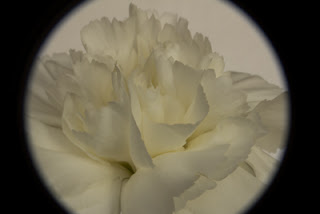I recently bought this lens and I would like to share my experience with it.
Disclaimer: the attached images were taken just to show what this equipment looks like and to point out visually what I am referring to in this review. By no means they are meant to show my photographic prowess so please forgive the poor quality.
The manufacturer’s description of the Raynox DCR-250 is:
The DCR-250 Super Macro lens obtains the maximum macro magnification power with the camera lens set at the most telephoto zoom position. The lens is made of high index optical glass, which produce rich and razor sharp image. The lens includes a Snap-on universal mount suitable for 52mm to 67mm filter sizes.
Magnification
|
2.5x
|
Rear Mount Diameter
|
43mm (52 to 67mm with included
Snap-on mount)
|
Front Mount Diameter
|
49mm
|
Construction, Elements/Groups
|
3E/2G
|
Lens Diameter
|
2.1" (53mm)
|
Length
|
0.7" (18mm)
|
Weight
|
2.1 oz (60g)
|
The package contains
- Snap-on Universal Adapter for 52mm to 67mm Mount
- The actual 2.5x Super Macro Lens
-
Carry box
-
1 Year Warranty
This lens is a less expensive option to buying a true macro lens. It is on par, cost wise, to close-up lenses, extension tubes, and teleconverters. This lens is more appropriate for a user who is just starting out with macro photography and does not have the budget to buy a “true” macro lens. If you are serious about specializing in macro photography this is probably not for you but it is a good starting point.
How it works is that it allows you to get much closer to the subject than you could without it. This is what allows you to get a magnified view of the subject. For this reason, this lens is only good for still life photography such as flowers. If you are taking pictures of moving things such as insects, this will not work for you. The little critter will likely fly away in terror before you get anywhere near it to be in focus.
The Raynox DCR-250 Macro Attachment has a magnification factor of 2.5X but it also comes in a magnification factor of 1.5X in the DCR-150.
My Experience:
When you are getting so close to the subject depth of field is extremely reduced. Therefore, you will need a sturdy tripod, use manual focus, and a remote trigger control to reduce any motion. Since the depth of field is so small in this close range you really need to use focus stacking to get more of the subject in focus. Very good lighting is a must because the light that comes through this lens is quite reduced. The image quality you get is actually very good. You can see details you would not otherwise be able to view. 2.5 magnification is in the extremely macro range.
Another positive is that it is very easy to put on and take off due to the Snap-on Universal mount that goes with it. In the field this comes in very handy since you will likely be using the same lens for general photography and just putting on this magnifier when you want to shoot a macro. It is also very light and comes in a plastic carrying case in which to store it during transport.I would describe the “snap-on” more like a “squeeze the side buttons, place inside the lens edge and let go” action. But still that is very easy and quick to do.
This lens and the universal attachment are quite thick (21mm) so there is quite a distance between the front of the element and the front of my lens.
The Canon lens has a filter size 67mm wide while the Raynox DCR-250 glass is 43 mm.
This leads me to my biggest pet peeve, the extreme vignetting in my photos. If you use a longer zoom the vignetting is so severe that it makes the image almost unusable for large prints. Because of this you have to always crop the image reducing substantially the size of the subject on your image. Had I known that, I might not have bought this lens. I also have a set of close-up lenses and while incoming light is also reduced, there is no such vignetting which gives me much more space on the image itself to include the subject. I don’t know about you, but I don’t want to have to crop every image that I take. I’d like to get my composition right in camera and not have to worry about cropping it later to make it work. Here is an example. This picture is right out of the camera and un-cropped. I only re-sized it for web:
Another negative, might be that you can’t attach your lens hood if you need to use it outdoor. So far this has not been an issue for me.
One thing I found very useful is the little plastic box it comes in. It is very handy for storage and transportation. If you use the sponge that comes with it, it will keep it from bouncing around as well.
The lens neatly screws into the adapter mount and I did not have issues screwing it and unscrewing it. It does attach firmly and I don't see how it would come off during normal use.
There is also a little cap that goes over the glass to protect it from scratches. This one is not that easy to put on and take off. I guess that could be good in that it will not "fall off" easily. Otherwise it is a pain.
The adapter is very easy to put on. You just need to squeeze the 2 side tabs, place them on the lip of your camera lens and let go. They attach firmly and I have not had it fall off yet.
Here is my list of Pros and Cons.
Pros:
More affordable than macro lenses
Extreme magnification
Easy to install and store
Very good image quality
Lightweight and portable
Cons:
Shorter depth of field than other options
Manual focus needed
Tripod required
Not recommended for use with moving subjects
Must be able to get very close to the subject to get the image in focus
How to order:
I bought mine on
Amazon for about $80.00.
It is also available at
B&HPhotoVideo for about the same price.
These are the 2 places where I buy most of my photography equipment and highly recommend either one for good customer service and cost.




















